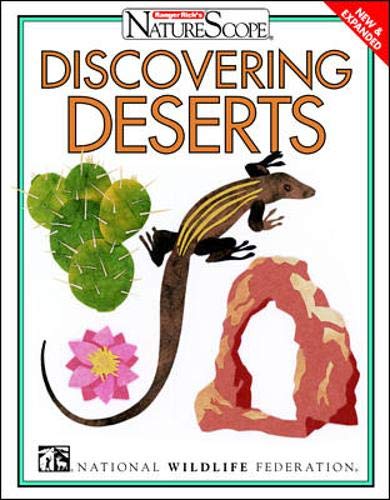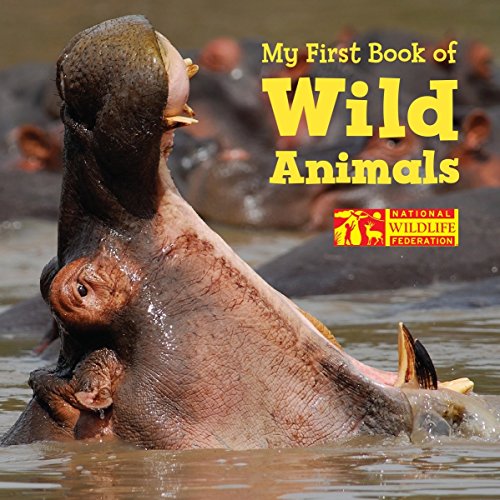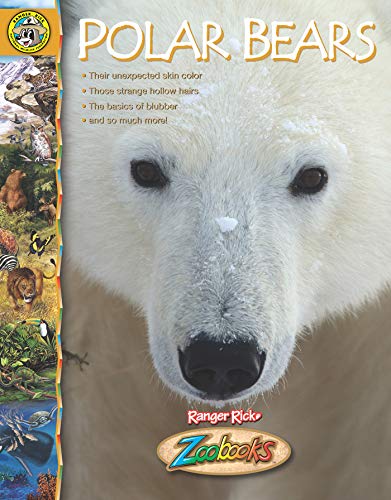-
My First Book of Animal Opposites
National Wildlife Federation
Board book (Charlesbridge, Sept. 20, 2016)Egret has LONG legs. Puffin has SHORT legs.Developed in partnership with Ranger Rick and the National Wildlife Federation, this photo-illustrated gem teaches the youngest of children about opposites using examples from the animal kingdom. Vibrant photos paired with sparse, lyrical text introduce the concepts in an easy-to-grasp form for youngsters just beginning to meet the printed page. Representing all seven continents and creatures from a variety of habitats, this board book is a comprehensive introduction to some of childhood's best-loved beasts: penguins and lions and otters, oh my!Families who love nature and the world’s wild places will enjoy sharing these animal opposites. M
M
-
Zoobooks Big Cats
National Wildlife Federation, National Wildlife Federation
language (National Wildlife Federation, Nov. 23, 2017)A lion’s roar can carry for over five miles! Now that he has your attention, look past the regal mane and big teeth to what really makes these big cats tick--their family units, their hunting skill, and the way these two things combine to put these cats at the top of the food chain.
-
Zoobooks Owls
National Wildlife Federation
language (National Wildlife Federation, Sept. 25, 2018)A lot of kids don’t realize an owl can’t move its eyes inside its head--it has to turn its entire head if it wants to see in a new direction. But can an owl really turn its head around 360 degrees? Who-o-o can pass up the chance to find out the answer?
-
Let's Hear It for Herps!
National Wildlife Federation
Paperback (McGraw-Hill, Nov. 1, 1997)A colorful and comprehensive examination of herpivores, includes a variety of theme-based activities designed to dispel the frightening myths about reptiles and amphibians. Original. A
A
-
Discovering Deserts
The National Wildlife Federation
Paperback (McGraw-Hill, June 1, 1998)Learn about life in a Joshua tree, compare the Sonoran and Sahara deserts by creating dioramas, make a desert rain wheel, locate fossils in the gobi desert, and create a field guide of desert predators. These new activities and more pack this new edition with hands-on learning about one of the world's most amazing habitats. K
K
-
My First Book of Wild Animals
National Wildlife Federation
Board book (Charlesbridge, Feb. 11, 2014)A snowy owl flying, a giant panda climbing, a huge gray whale emerging from the waves: See these beautiful animals in the wild, where they belong. These amazing photos from the archives of the National Wildlife Federation showcase a menagerie of marvelous creatures. Children will look wide-eyed at a herd of wildebeests rushing through water; a mama brown bear attending to her adorable cubs; a smiling alligator, its powerful jaws opened wide; adult elephants protectively surrounding their young; and more. While enjoying their close-up look at this wonderful world of wildlife, kids will gain an early and lifelong appreciation for the marvelous creatures who also call Earth home. M
M
-
My First Book of Funny Animals
National Wildlife Federation
Board book (Charlesbridge, Feb. 10, 2015)Featuring spectacular images straight from the vaults of the National Wildlife Federation, these should be the very first books to introduce children to animals from around the world. Every photo shows these creatures in their natural habitats. Each books in the series carries the logo and name of the National Wildlife Federation. These are not just board books, but the first books that any toddler will love and adults will enjoy reading. Each full page spread is a story by itself. See the lions arguing but the walrus can’t bear to watch. The baby sea lion wants to play and the organgutan wants to play too. The chipmunk tells the polar bear to stop, and the polar bear does. Fantastic photos of wildlife combined with funny comments to make these a new kind of board book. F
F
-
My First Book of Baby Animals
National Wildlife Federation
Board book (Charlesbridge, Feb. 11, 2014)A sweet tiger cub, padding softly on its paws across the ground. A little lion getting its head nuzzled by mama as they soak in the sun. Two young kangaroos—joeys—at play. An infant chimpanzee, clinging lovingly to its mother’s back. Nothing’s more irresistible than an animal baby, and with these magnificent photos, kids can meet the cutest ones of all, and their families, too. From two fox kits climbing on logs, to an adorable baby bunny, to a trio of polar bears huddling close to stay warm, to penguins, polar bears, eaglets, and foals, these precious creatures will fascinate human "cubs"—and entice them to look at the pictures over and over again. F
F
-
Trees are Terrific!
National Wildlife Federation
Paperback (McGraw-Hill, June 1, 1998)A collection of stories, games, trivia questions, and crafts introduce readers to trees P
P
-
Zoobooks Seals and Sea Lions
National Wildlife Federation
language (National Wildlife Federation, June 27, 2018)Sea lions will sometimes go days without coming ashore. What do they do when they get tired of swimming? How do they sleep? How do they protect themselves from whales and other predators? Find out how much more there is to these animals than what the aquatic parks can show.
-
Zoobooks Polar Bears
National Wildlife Federation, National Wildlife Federation
language (National Wildlife Federation, Jan. 27, 2019)Polar bears are marine mammals, and spend much of their time on Arctic sea ice. Their fur is thicker than any other bears' and covers even their feet for warmth and traction on ice. They are the largest land carnivores in North America and top predator in the arctic habitat.
-
Zoobooks Apes
National Wildlife Federation
language (National Wildlife Federation, Jan. 1, 2018)Picture a massive gorilla--a 350-pound chest-beater as strong as six men--tolerating all kinds of playful torment from his impish baby. Apes hug and kiss and shed tears just like people do. Discover other little-known human similarities--and important differences.